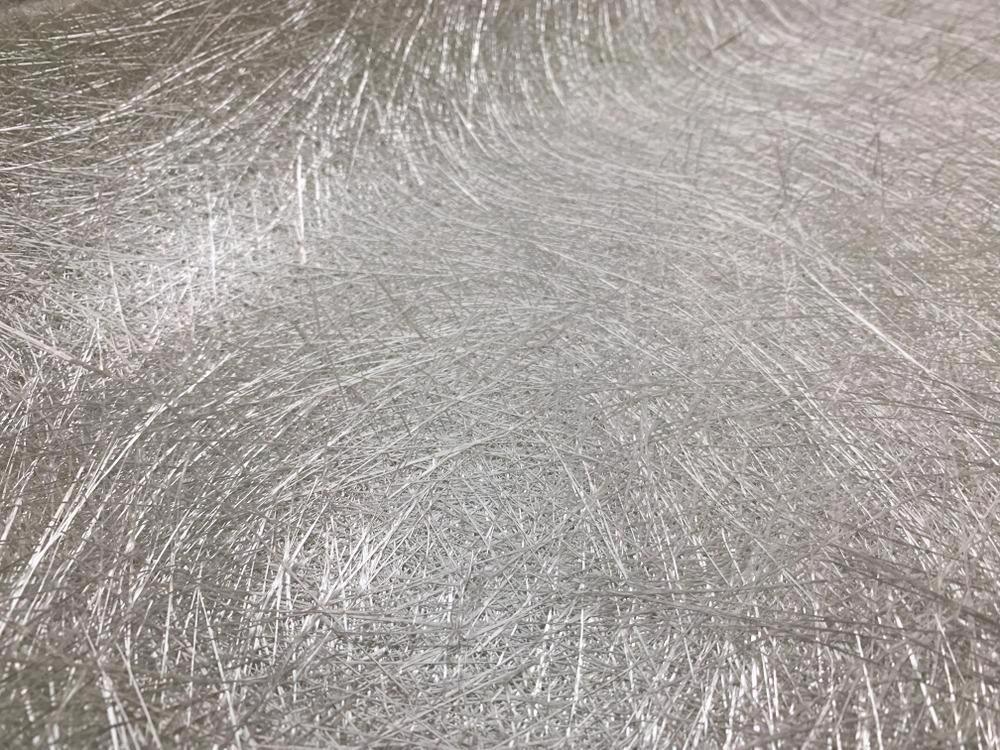In this interview, Greg Bond, Structural Engineer at Stongwell, talks to AZoM about all things fiber-reinforced polymers (FRP).
What is FRP?
Fiber-reinforced polymer (often simply "FRP" or "fiberglass") is a composite consisting of a polymer resin matrix reinforced by embedded glass fibers. The strength of a fiberglass part is determined primarily by the type, orientation, quantity, and location of the composite's glass fibers.

Image Credit: Shutterstock/TASER
Strongwell manufactures FRP using the pultrusion process, which involves pulling a liquid resin mixture and reinforcing glass fibers through a heated steel forming die using a continuous pulling device. This results in a strong, lightweight, and corrosion-resistant composite structural shape with a constant cross-section.
When is FRP the right choice?
Pultruded FRP generally replaces steel, aluminum, concrete, or wood when one of those traditional structural materials isn't the ideal choice. Common reasons for using FRP instead of a traditional material include:
- Weight: Pultruded FRP is stronger than structural steel on a pound-for-pound basis and weighs approximately 75-80% less than steel and 30% less than aluminum.
- Corrosion Resistance: FRP is impervious to rust, rot, and a broad range of corrosive environments. Strongwell offers a robust Corrosion Resistance Guide to offer specific guidance on corrosion.
- Conductivity: An excellent insulator, FRP has low thermal and electrical conductivity.
- Electromagnetic Transparency: Fiberglass is virtually transparent to radio waves, microwaves, and other electromagnetic frequencies. The cellular industry has long benefitted from the use of FRP in its designs for this reason.
- Installed cost/ongoing maintenance costs: FRP installed price is generally on par with the installed cost of carbon steel, as no welding is required, fewer skilled workers are needed, and equipment needs are much fewer. The installation speed and the minimal costs of ongoing maintenance make FRP an excellent choice in many cases where project longevity is key.
How (generally) do you specify FRP for your projects?
Just like any other structural specification, specifying the series of components that meet all applicable building codes and end-user requirements is the primary consideration when specifying FRP. To provide guidance in this regard, Strongwell offers a complete Design Manual for its FRP products. In addition to this, specification templates for most of Strongwell's FRP products are available. Strongwell also has in-house engineers to assist with specifying the appropriate products for your designs.
What's the purpose of visual standards in structural FRP?
The primary purpose of setting visual standards for FRP products is to assist in the identification of defects, both acceptable and unacceptable. Some defects have no bearing on the structural performance of a member, while others indicate an underlying problem with the member's ability to perform as designed. ASTM D4385 Standard Practice for Classifying Visual Defects in Thermosetting Reinforced Plastic Pultruded Products offers specific guidance for manufacturers, specifiers, and end-users.
What benefit(s) does having a manufacturer who is ISO 9001 certified to give the end product user?
ISO 9001:2015 is the most recognized and widely-accepted standard on quality. Specifying a manufacturer that is ISO 9001:2015 certified ensures the manufacturer can consistently provide products and services that meet customer specifications and requirements, with more reliable production scheduling and delivery. ISO 9001:2015 is also focused on continual improvement, even beyond the scope of just product quality. ISO 9001 offers a structure for manufacturers' quality and business systems, which fosters an environment of high quality and continual improvement across the entire business.
Why do some manufacturers report material data in minimums, others maximums, others average, and others typical?
First, let's review the definitions of each of these terms:
- Minimum Value: A value that is a specified distance from the average. The most common specified distance for pultruded FRP structural profiles is three standard deviations.
- Characteristic Value: As defined by ASTM D7290 Standard Practice for Evaluating Material Property Characteristic Values for Polymeric Composites for Civil Engineering Structural Applications, a value that is usually between two and three standard deviations from the average.
- Average Value: The sum of a list of values divided by the number of values in the list, without consideration for standard deviations.
- Typical Value: No definition. It is not recommended for use by Professional Engineers. It can be any value the manufacturer chooses.
Strongwell recommends using minimum or characteristic values, as they reflect the most consistently conservative numbers and offer engineers and specifiers confidence in the predictability of the materials' performance.
While not always the case, suppliers who utilize an average or typical value may be masking inconsistencies in their products' performance or a lack of testing. Anytime a supplier reports performance in an average or typical value, ask for more specific data or be prepared to increase the factor of safety in designs.
What is the effect of cold weather on FRP's structural performance, and what is the impact of higher operating temperatures on FRP's structural performance?
Independent test data confirms that Strongwell's EXTREN® structural shapes and plate maintain their mechanical and physical properties for temperatures down to at least -60°F (-51°C).
Elevated temperatures do have to be taken into consideration when designing with FRP. When operating conditions will be above 100°F (38°C), the Strongwell Design Manual offers specific guidance on retaining mechanical properties for its standard line of products/resin systems. However, Strongwell routinely processes specialty resin systems to achieve higher temperature ratings for specific applications.
About Greg Bond
Greg Bond, PE: Greg Bond has worked as a Structural Engineer with Strongwell for over 13 years. A graduate of Iowa State University with a B.S. degree in Civil Engineering, Greg obtained his Professional Engineering license in 1999 and maintains licensure in the states of Minnesota, Iowa, and Nebraska. Prior to Strongwell, he was a consulting engineer for 13 years, predominantly involved with land development and infrastructure projects. Greg is the current Vice-Chair of the American Composites Manufacturers Association (ACMA) Pultrusion Industry Council and is active in several professional organizations and committees.
Disclaimer: The views expressed here are those of the interviewee and do not necessarily represent the views of AZoM.com Limited (T/A) AZoNetwork, the owner and operator of this website. This disclaimer forms part of the Terms and Conditions of use of this website.